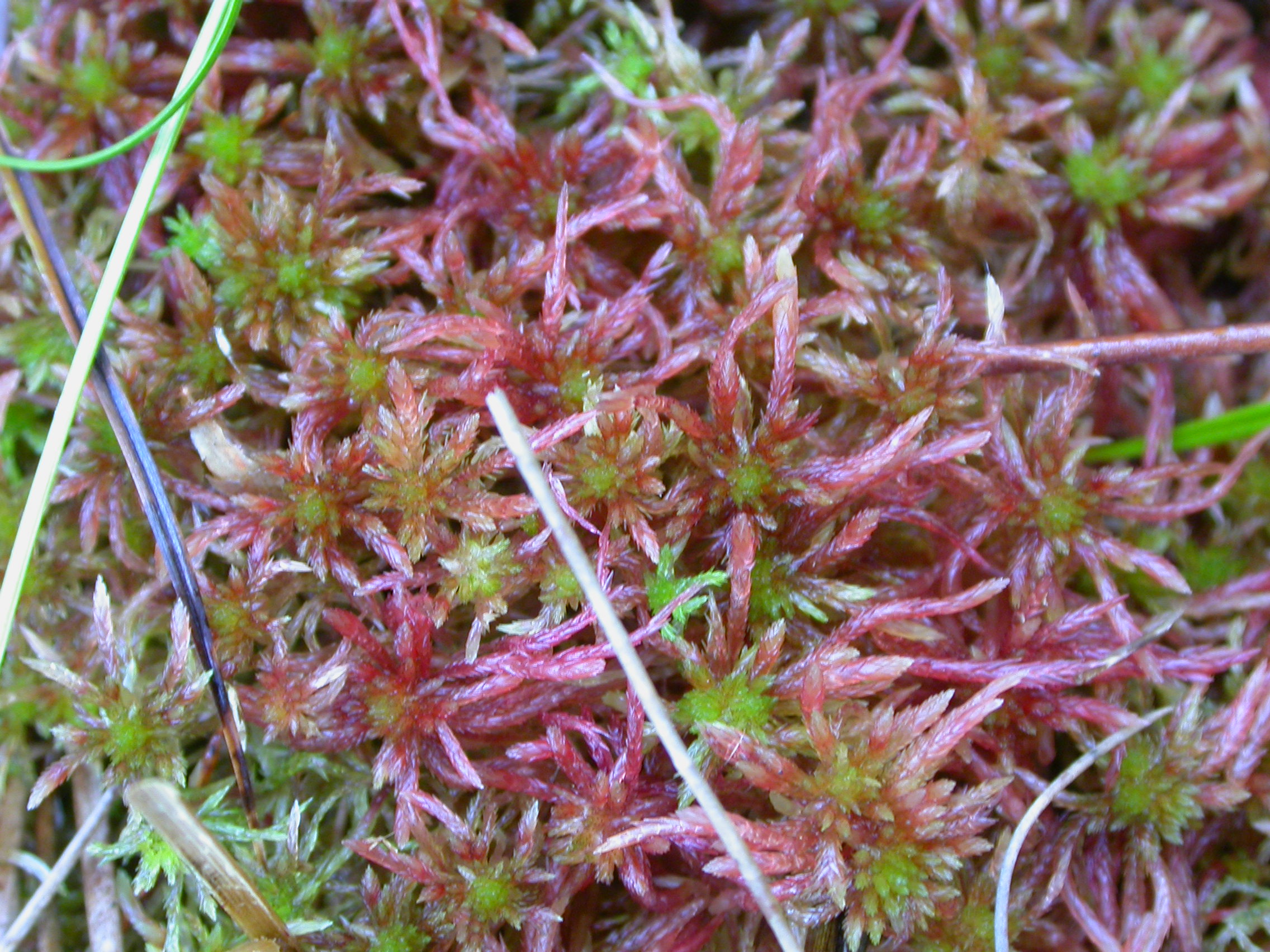Sphagnum
(Sphagnum subnitens)

Description
Plants moderate-sized, relatively robust, smaller in exposed sites, elongated in shaded sites, soft, capitulum - large; pale green, green, yellowish, yellow-brown, brown, pinkish, purplish; with strong metallic sheen when dry. Stems brown or purplish; superficial cortical cells aporose. Stem leaves triangular to triangular-lingulate, 1.2-1.7 mm, apex acute to sometimes shortly cuspidate due to involute margins near apex, border narrow at base (less than 0.25 width); hyaline cells mostly efibrillose and aporose, 0-1(-2)-septate. Branches long and tapering, unranked. Branch fascicles with 2 spreading and 1-2 pendent branches. Branch leaves 1.3-2.7 mm, ovate to ovate-lanceolate, 1.3-2.7 mm, concave, straight, apex involute; hyaline cells on convex surface with 2-6 large, narrowly elliptic ringed pores along the commissures, but usually absent from marginal regions of leaf, concave surface aporose or with 1-4 large round pores per cell especially near base. Sexual condition monoicous. Spores 22-32 -m, finely to irregularly coarsely-papillose on proximal surface, irregularly coarsely papillose on distal surface; proximal laesura less than 0.5 spore radius.Capsules mature early summer. Coastal oceanic mires that range from weakly to moderately minerotrophic; low to moderate elevations; B.C.; Alaska, Calif., Oreg., Wash.; Eurasia; Pacific Islands (New Zealand).
Taxonomic tree:







